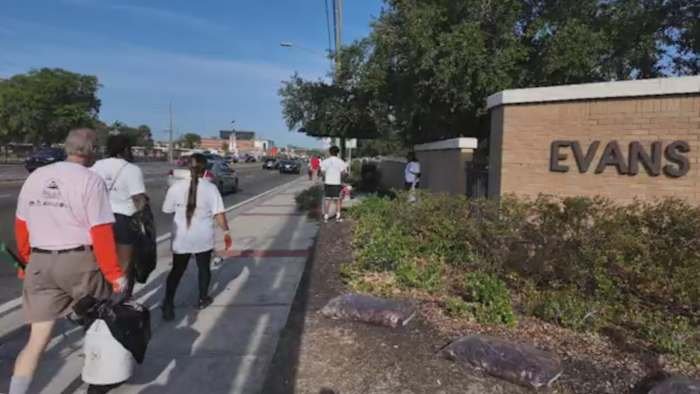Orlando, FL – In a groundbreaking discovery that reshapes our understanding of ancient human ingenuity, scientists have identified the oldest known tools crafted from whale bones, dating back approximately 20,000 years. This revelation, recently published in a leading scientific journal, provides fascinating insights into how our ancestors harnessed the resources of their environment—even the ocean’s largest mammals—to survive and innovate during the last Ice Age. For Orlando residents fascinated by archaeology, history, and science, this discovery offers a fresh perspective on humanity’s shared past and its enduring connection to the natural world.
The Discovery: Uncovering Ancient Whale Bone Tools
The discovery was made along the rugged coastlines of what is today southern Chile, where archaeologists unearthed a collection of modified whale bones among other ancient artifacts. These bone tools, carefully shaped and worn from use, include items likely used for butchering, digging, or woodworking. Radiocarbon dating confirmed their astonishing age—circa 20,000 years old—making them the oldest known whale bone tools on record.
What sets these tools apart is not only their age but the evidence they provide of early human adaptation. While stone tools from prehistoric times are well-known, the use of whale bones demonstrates a sophisticated knowledge of available materials, especially in coastal environments where large marine mammals sometimes washed ashore. The findings suggest humans were not just passive scavengers but innovative toolmakers, utilizing every part of the animals they encountered.
Why Whale Bone? Understanding Ancient Innovation
Whale bones, due to their size and density, offered unique advantages to early humans. Unlike stone, whale bone could be more easily shaped and sharpened for specific tasks. The bones’ natural strength made them ideal for heavy-duty tools that stone might not have been suitable for, such as digging sticks, club-like implements, or even components for constructing shelters.
This adaptability was especially critical during the harsh conditions of the last Ice Age. As glaciers covered much of the world’s northern continents, coastal communities would have relied on whatever resources were available. Whale carcasses provided not only food and shelter but also raw materials for daily survival. The emergence of whale bone tools is a testament to human resilience—a trait still celebrated in communities like Orlando, where resourcefulness fuels progress and innovation.
Connecting the Past to the Present: Lessons for Orlando
While Orlando is far from the windswept coasts of ancient Chile, the implications of this discovery resonate locally. Central Florida is home to a vibrant scientific and educational community, including top universities, museums, and a growing interest in archaeology and paleontology. This research reminds us that the drive to innovate and adapt is a universal human trait—one that transcends both time and geography.
For Orlando students and educators, the story of the whale bone tools provides a powerful case study in problem-solving and environmental adaptation. Schools and museums in our city can use these findings to inspire curiosity about ancient technologies, environmental stewardship, and the importance of understanding our place in the broader tapestry of human history. Whether through local lectures, traveling exhibits, or STEM programs, Orlando’s connection to global discoveries like this one is stronger than ever.
Implications for Archaeology and Human History
The dating of these whale bone tools pushes back the timeline for complex tool use and highlights the sophisticated relationship early humans had with their environment. It challenges previous assumptions that early toolmaking was limited to stone and simple bone fragments, suggesting a broader repertoire of materials and methods.
Archaeologists now have new questions to explore: How widespread was the use of whale bone tools among ancient coastal peoples? Were similar technologies developed independently in other regions? And what does this tell us about the migration and adaptation patterns of early Homo sapiens?
For Orlando’s archaeological community, these questions serve as a reminder of the ongoing nature of scientific discovery. Every new find—whether made on the other side of the world or right here in Florida—has the potential to transform our understanding of the human story.
Looking Ahead: Orlando’s Role in the Global Scientific Conversation
With this discovery making headlines worldwide, Orlando’s scientific institutions and curious residents have a unique opportunity to join the conversation. Local experts may contribute to related research, offer educational programs, or host public forums discussing the significance of such archaeological breakthroughs. The city’s museums and cultural centers can use this moment to highlight humanity’s shared heritage and the ways in which ancient innovations continue to inform modern life.
As Orlando continues to grow as a hub for science, education, and cultural exchange, discoveries like the whale bone tools underscore the importance of supporting research and promoting public engagement with our past. After all, understanding where we come from is key to shaping our future.
Conclusion: Share Your Thoughts!
The uncovering of the world’s oldest whale bone tools is more than just an archaeological milestone—it’s a window into the ingenuity and adaptability of our ancestors. For Orlando, it’s a chance to reflect on our own spirit of innovation and the value of staying connected to humanity’s rich and varied history.
What do you think about this remarkable discovery? How do you feel ancient history and modern life intersect in Orlando? Share your thoughts in the comments below! Your voice helps keep the conversation going and connects Orlando to the world of discovery beyond our city limits.
















